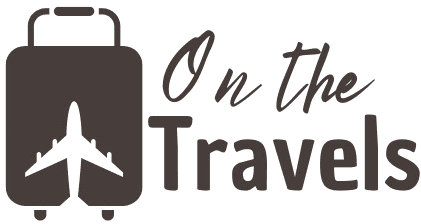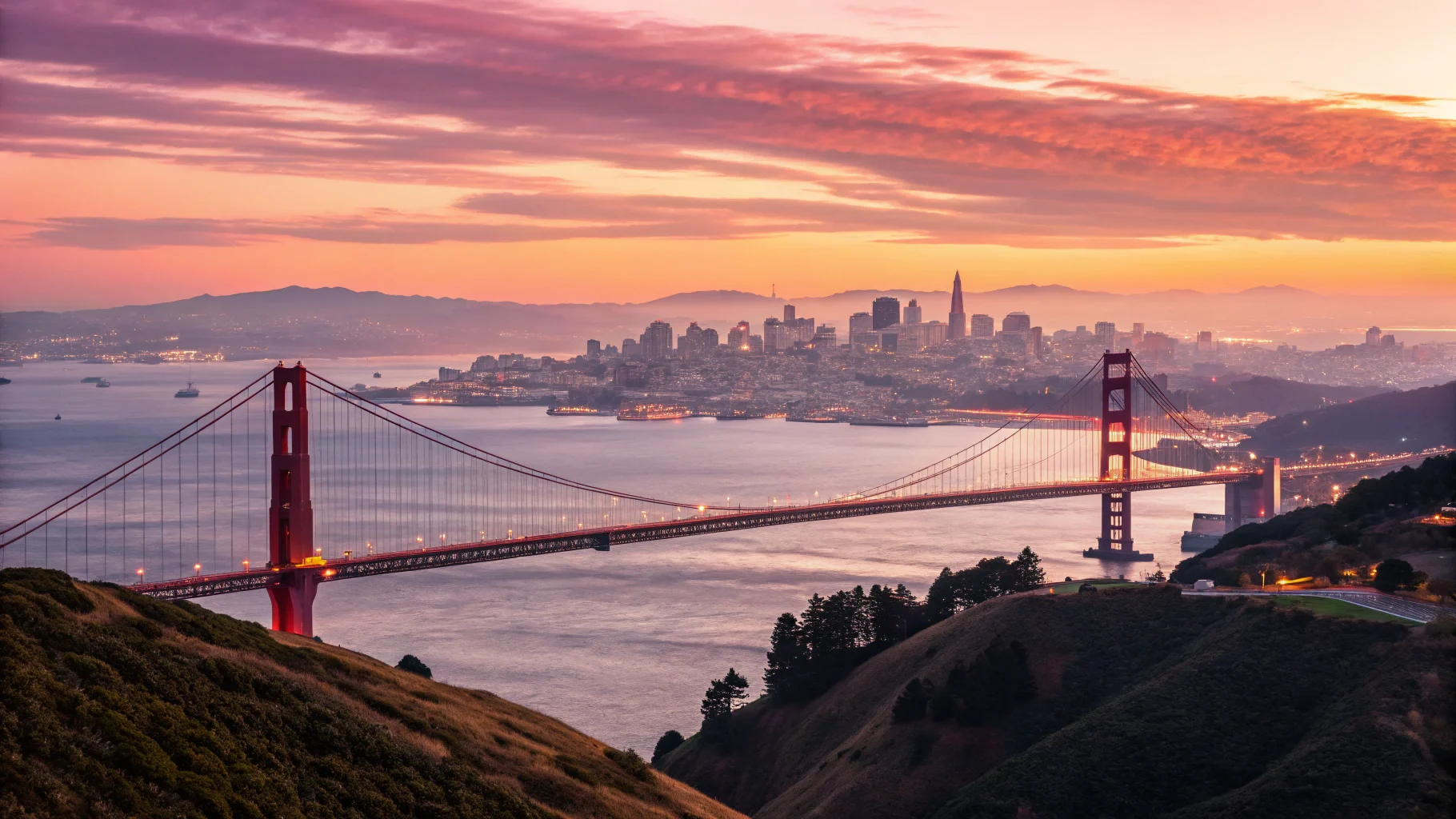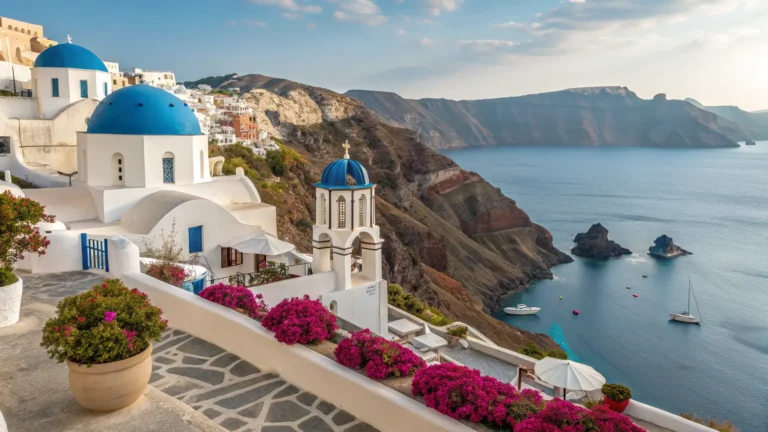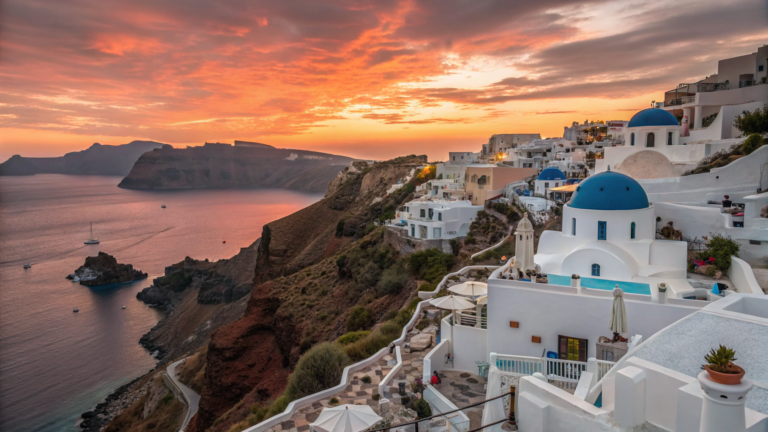Where to Stay in San Francisco 7 Best for First-Timers
Last updated on June 18th, 2025 at 12:03 am
Three years ago, I made the worst hotel booking mistake of my life. Picture this: I’m dragging my suitcase up Powell Street at midnight, squinting at Google Maps, trying to find my “budget-friendly” hotel. The address led me straight into the heart of the Tenderloin and trust me, that’s not where you want to be figuring out your bearings in San Francisco. That night taught me a hard lesson about where to stay in San Francisco and where not to.
My “great deal” turned into three nights of sirens, shouting matches outside my window, and stepping over things I’d rather not describe. By day two, I was googling “how to break a hotel reservation” while hiding out in a Starbucks six blocks away.
That disaster taught me something important: in San Francisco, your neighborhood isn’t just about where you sleep. It’s about whether you fall in love with this city or spend your vacation wishing you’d picked somewhere else entirely.
Since then, I’ve stayed in seven different San Francisco neighborhoods, helped my parents plan their anniversary trip, guided my college roommate through his bachelor party planning, and learned exactly what works (and what definitely doesn’t) for people visiting this wild, wonderful city for the first time.
Table of Contents
Why San Francisco Neighborhoods Matter When Deciding Where to Stay in San Francisco
Most cities, you can pick a decent hotel downtown and be fine. San Francisco? That’s not how this place works. Each neighborhood here has its own weather, its own personality, and honestly, its own set of survival rules.
Take my friend Emma’s visit last spring. She booked a cute Airbnb in the Mission because the photos looked amazing. What she didn’t realize? The Mission is hot and sunny while downtown is cold and foggy – sometimes on the same day. She packed for typical San Francisco weather and ended up buying a whole new wardrobe because nothing she brought worked for her neighborhood.
Then there’s the transportation maze. My cousin Dave thought he’d save money staying way out in the Richmond District. Sure, he saved $100 a night on his hotel. But he spent $150 on Ubers because getting anywhere took forever, and the buses stopped running early on weekends.
The safety thing varies wildly too. You can walk from a perfectly safe block into sketchy territory in about two minutes if you don’t know the invisible neighborhood boundaries. I learned this during my Tenderloin adventure – and trust me, you don’t want to learn it the same way I did.
The 7 Neighborhoods That Actually Work for First-Time Visitors
Union Square – The Neighborhood That Never Lets You Down
Every San Francisco expert will tell you Union Square is “too touristy.” You know what I tell those experts? Sometimes touristy exists because it works.
I’ve stayed around Union Square four different times now, and here’s why I keep coming back: everything you need is right there. Hungry at 10 PM? Dozens of restaurants within walking distance. Need to get to Chinatown? It’s literally next door. Want to ride a cable car? The Powell Street line starts two blocks away.
My parents visited for their 30th anniversary last December, and I booked them at the Handlery Union Square. Dad’s got bad knees, so all the walking in other neighborhoods would’ve been rough. From Union Square, they could take the cable car to Fisherman’s Wharf, walk to great restaurants, and feel completely safe heading back to their hotel after the theater.


What makes Union Square work:
- You’re in the middle of everything that matters
- Safe streets with plenty of people around, even late at night
- Every type of transportation connects here
- Hotels for every budget, from hostels to luxury
The honest drawbacks: Yeah, it’s crowded. You’ll wait in line for cable cars. Street performers can be loud. And you’ll pay tourist prices for everything from coffee to keychains.
Money talk: Budget hotels start around $120 a night, mid-range runs $200-300, and if you want luxury, expect $400+. But here’s a secret – book directly with hotels and ask about upgrades when you check in. I’ve gotten free room upgrades three times just by being friendly and asking nicely.
Fisherman’s Wharf – Don’t Let the Haters Fool You
Local San Francisco folks love to bash Fisherman’s Wharf. “It’s a tourist trap,” they’ll say. “Real San Francisco is somewhere else.”
But you know what? My sister brought her twin 8-year-olds here last summer, and those kids still talk about feeding the sea lions at Pier 39. They rode the historic streetcar, ate clam chowder in sourdough bowls, and watched street performers juggle fire. Was it authentic San Francisco culture? Maybe not. Was it an absolutely magical family vacation? Absolutely.
If you’re visiting with kids, elderly relatives, or anyone who wants the classic San Francisco postcard experience without a lot of planning, Fisherman’s Wharf delivers exactly what you expect.
Why families love it here:
- Everything is designed for visitors, so nothing feels intimidating
- Short walks to major attractions
- Tons of dining options (yes, overpriced, but convenient)
- Hotels with pools and family-friendly amenities
What you need to know: Parking costs a fortune ($30+ per day), everything is expensive, and in summer, the crowds are intense. But if easy and safe is your priority, it works perfectly.
Insider tip: Book a hotel with bay views if possible. Waking up to see Alcatraz and the Golden Gate Bridge makes the extra cost worth it.
Nob Hill – When You Want to Feel Like You Own the City
Last year, I splurged on two nights at the InterContinental Mark Hopkins for my 35th birthday. Walking out of that lobby each morning, looking down at the city spread out below me – that’s when I understood why people fall hard for San Francisco.
Nob Hill is pure elegance. The hotels are gorgeous, the views are incredible, and you feel like you’re staying in the San Francisco from old movies. It’s where tech executives stay when their companies are paying, and where anniversary couples go to feel fancy.
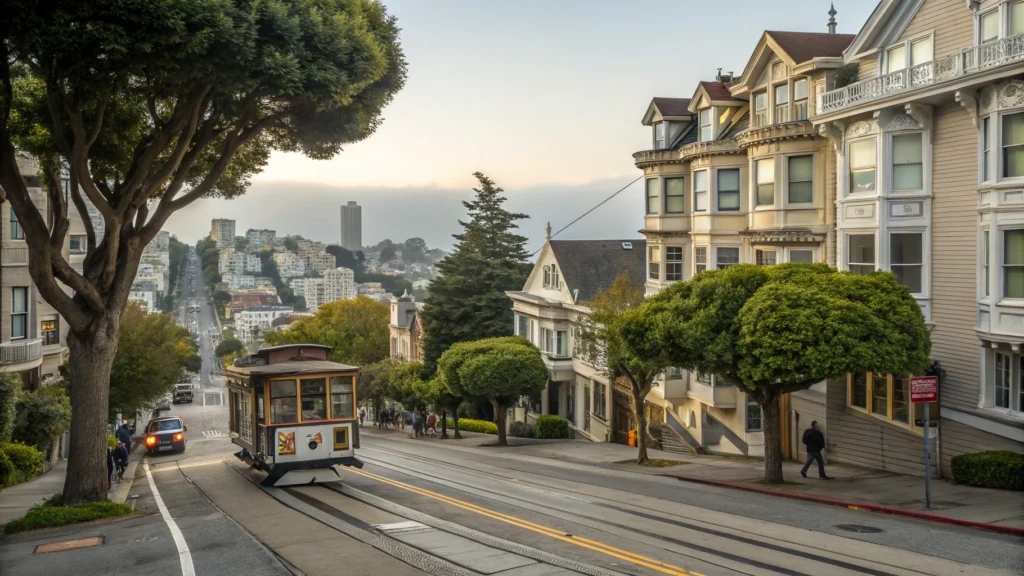

What you get in Nob Hill:
- Some of the most stunning city views in the world
- Historic hotels with character and stories
- Cable car stops right outside your door
- Walking distance to Union Square and Chinatown
The reality check: Everything costs more up here. Hotels, restaurants, even the corner store charges premium prices. And those hills? They’re no joke. I watched a delivery guy struggle for ten minutes to get Chinese food up to my hotel. Make sure you’re okay with steep walks or budget extra for rideshares.
Budget expectations: You’re looking at $300+ per night for decent rooms, and $500+ for the really special places. But if you’re celebrating something important, it’s worth every penny.
SoMa (South of Market) – Where San Francisco Gets Real
SoMa is where I’d stay if I lived in San Francisco. It’s got incredible museums, restaurants that locals actually frequent, and that urban energy that makes you feel like you’re in the heart of a real city.
During a work conference last year, I stayed at the St. Regis in SoMa. Between meetings, I wandered into the Museum of Modern Art, discovered an amazing Vietnamese restaurant that had zero tourists, and found a rooftop bar where I could actually have a conversation without shouting over crowds.
What makes SoMa special:
- World-class museums and art galleries
- Restaurants focused on food, not Instagram photos
- Easy access to both downtown and cooler neighborhoods
- Hotels with modern amenities and reasonable prices
The trade-offs: Some streets feel sketchy after dark, especially the blocks closer to the Tenderloin. And you won’t get those classic San Francisco views – this is more urban landscape than scenic beauty.
Smart planning: Stick to the blocks around Yerba Buena Gardens and the Museum District. That’s where the good hotels are, and it feels safest for evening walks.
Hayes Valley – The Neighborhood Locals Don’t Want You to Discover
This is where I send friends who want to experience San Francisco like they live here. Hayes Valley has the best coffee shops, coolest boutiques, and that neighborhood vibe where you actually chat with locals at the grocery store.
My college roommate Matt stayed at the Phoenix Hotel here during his bachelor party weekend. Instead of the typical tourist circuit, they spent their days browsing record stores, trying craft cocktails at places with no signs, and eating at restaurants they found by wandering around. He said it felt like discovering a secret version of San Francisco.


Why Hayes Valley is perfect for culture lovers:
- Locally-owned restaurants and shops
- Easy access to Golden Gate Park and the Castro
- Beautiful Victorian architecture
- Real neighborhood feel without tourist crowds
What to expect: Fewer big hotels, more boutique places and B&Bs. You’ll need to plan transportation to major tourist sites. And some visitors find it too quiet compared to busier neighborhoods.
Local secret: The farmers market on Saturdays is incredible, and most hotels here will give you insider tips that you won’t find in guidebooks.
Marina District – Instagram Dreams Come True
If your San Francisco trip is about those perfect photos for social media, the Marina District delivers. You’re minutes from the Golden Gate Bridge, you’ve got waterfront running paths, and the whole neighborhood looks like a movie set.
My friend Jessica stayed at the Hotel del Sol during her honeymoon, and every morning she’d walk to Crissy Field with her coffee and watch the fog roll under the Golden Gate Bridge. According to her Instagram (and her constant texting), those were the most beautiful mornings of her life.
Marina District highlights:
- Postcard-perfect Golden Gate Bridge views
- Great for outdoor activities and exercise
- Upscale dining and shopping
- Safe, clean streets with a residential feel
The reality: You’re removed from most tourist attractions. Getting to Union Square or Fisherman’s Wharf requires planning and either good public transit knowledge or rideshare budget. Also, summer fog can be intense – pack layers even if it’s sunny when you leave your hotel.
Perfect for: Couples celebrating something special, fitness enthusiasts, and anyone who prioritizes beautiful surroundings over convenience.
Castro District – History, Culture, and Amazing Nightlife
The Castro tells an important story about San Francisco, and staying here connects you to something deeper than typical tourist experiences. Plus, the nightlife is fantastic, and the restaurants are seriously underrated.
I had friends visit during Pride weekend two years ago, and staying in the Castro made their entire trip more meaningful. They weren’t just seeing San Francisco – they were experiencing a neighborhood that’s been at the center of major social change.


What makes Castro unique:
- Rich history and ongoing cultural significance
- Vibrant nightlife and dining scene
- Beautiful Victorian houses and interesting architecture
- Strong community feel and friendly locals
Important to know: The nightlife here is definitely geared toward the LGBTQ+ community. That’s not a negative – it’s just the character of the neighborhood. Also, it’s not as centrally located for typical tourist attractions.
Best for: People interested in LGBTQ+ history and culture, nightlife enthusiasts, and travelers who want authentic local experiences.
The Practical Stuff Nobody Tells You
Getting Around Without Losing Your Mind
Transportation in San Francisco confused me for months when I first moved here. Here’s what I wish someone had told me from the beginning:
Easiest for getting everywhere: Union Square and SoMa. Multiple bus lines, BART access, and cable cars all converge in these areas.
Most walkable for attractions: Union Square, Nob Hill, and parts of SoMa. You can reach Chinatown, Financial District, and shopping on foot.
Requires planning: Marina District, Hayes Valley, and Castro. Public transit exists, but you’ll need to study routes or budget for rideshares.
Money-saving tip: Get a Clipper Card for public transit. It works on buses, trains, and cable cars, and it’s way easier than figuring out exact change every time.
Safety Without Paranoia
Let me be straight about safety because sugar-coating it doesn’t help anyone. Most of these neighborhoods are quite safe, but San Francisco is still a big city with big city issues.
Safest overall: Nob Hill, Marina District, and the main Union Square area. Well-lit, lots of people around, regular police presence.
Safe with normal city precautions: Hayes Valley, Castro, and Fisherman’s Wharf. Trust your instincts, stick to main streets at night, don’t flash expensive stuff around.
More variable: Parts of SoMa can feel sketchy, especially blocks closer to the Tenderloin. Stay aware of your surroundings and don’t wander randomly after dark.
The best advice I can give? Trust your gut. If something feels off, it probably is. Move toward busier, better-lit areas, and don’t be embarrassed to call a rideshare instead of walking.
Budget Reality Check
Here’s what you can actually expect to spend on hotels, based on my experience booking for myself and friends:
Luxury level ($350+ per night): High-end Nob Hill hotels, waterfront Marina properties, boutique SoMa places with all the amenities.
Mid-range ($180-350): Most Union Square hotels, decent Fisherman’s Wharf options, nicer places in Hayes Valley and Castro.
Budget-conscious ($100-180): Hostels, basic motels, and older hotels in less central locations.
Money-saving secrets: Book directly with hotels when possible – they often match online prices and throw in perks. Ask about upgrades when you check in. And avoid booking during major conferences or events when prices skyrocket.
My Real Recommendation Based on Three Years of Mistakes and Successes
After all my San Francisco adventures, disasters, and discoveries, here’s what I tell everyone planning their first visit: start with Union Square.
I know that sounds boring. I know it seems obvious. But there’s a reason it works so well for first-timers. You’ll have easy access to everything you want to see, you’ll feel safe walking around, and you won’t spend half your vacation figuring out how to get places.
My parents, my sister’s family, my college friends, and my coworkers who’ve visited – the ones who stayed in Union Square had stress-free trips and came home with great photos and stories. The ones who tried to be too clever about picking “authentic” neighborhoods? Half of them ended up frustrated and disappointed.
Once you’ve been to San Francisco a few times and know what you like, then branch out. Choose Hayes Valley for local culture, Marina for views, Castro for nightlife, or SoMa for museums. But for that crucial first impression? Union Square delivers every time.
Special circumstances: If you’re traveling with kids, Fisherman’s Wharf makes perfect sense. If you’re celebrating an anniversary, splurge on Nob Hill. If you’re really interested in LGBTQ+ culture and history, Castro is meaningful. Just match your choice to what matters most about your trip, not what sounds coolest.
Making Your Final Decision
Here’s my foolproof method for choosing: write down your top three priorities for this trip. Is it seeing major attractions easily? Having Instagram-worthy views? Experiencing local culture? Staying within budget? Feeling completely safe?
Once you know what matters most, the right neighborhood usually becomes obvious. Don’t overthink it – San Francisco is compact enough that no choice will completely ruin your vacation.
But do book in advance, especially for summer visits. I’ve seen too many people arrive without reservations and end up paying $400 a night for mediocre places or staying way out in neighborhoods that make everything harder.
The most important thing is getting here and experiencing this incredible city. Whether you end up loving the tourist chaos of Fisherman’s Wharf or discovering hidden gems in Hayes Valley, San Francisco has a way of surprising you.
What questions do you have about choosing where to stay in San Francisco? I love helping people avoid the mistakes I made during my early visits – drop a comment and let me know what’s worrying you most about planning your trip!
